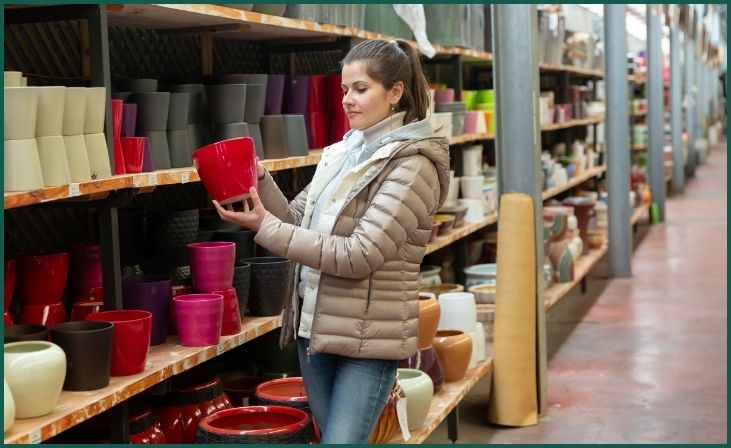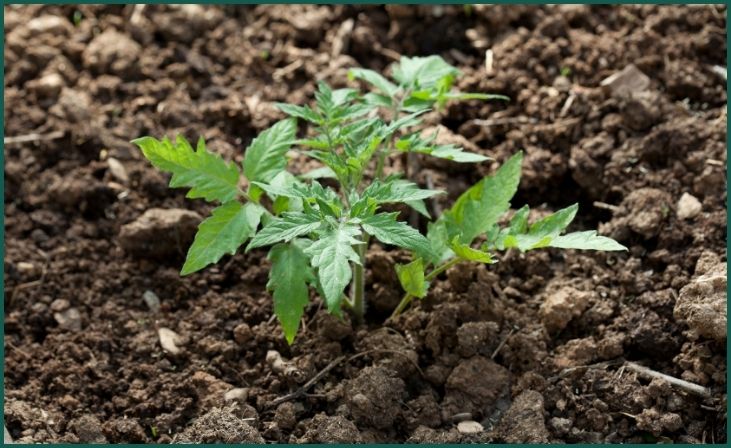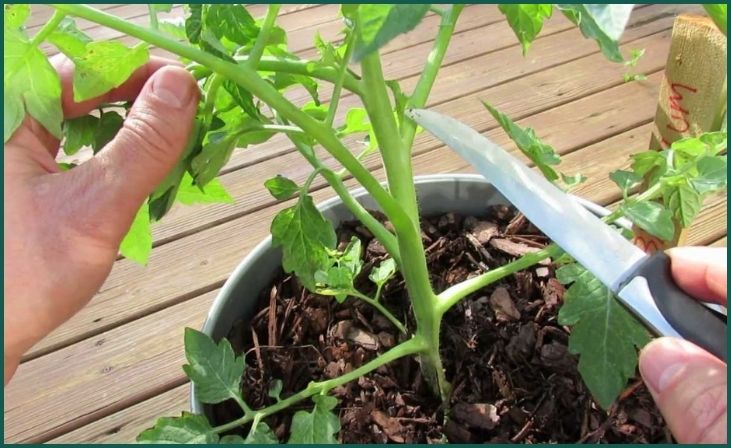Tomatoes, with their vibrant hues and succulent taste, are a garden favorite for many. Yet, for urban dwellers or those with limited space, traditional ground planting might not be feasible. Enter container gardening—the solution to cultivating these juicy delights right on your patio or balcony. In this bustling guide, we’ll unlock the secrets to successfully growing tomato plants in pots. From pot selection to watering techniques, we’ll equip you with the know-how to nurture thriving tomato crops. Get ready to embark on a journey of green-thumb glory as we dive into the world of container-grown tomatoes.
Table of Contents
ToggleTips for Growing Tomato Plants in Pots
1. Choose the Right Pot Size

Selecting the appropriate pot size is crucial for the health and productivity of your tomato plants. Larger pots, at least 18 inches in diameter and depth, provide ample space for root development, allowing the plants to establish a strong foundation. With more room to spread out, the roots can access sufficient nutrients and water, resulting in healthier, more robust plants. Additionally, larger pots offer better stability, reducing the risk of tipping over, especially as the plants grow taller and heavier with fruit. By choosing the right pot size, you create an optimal environment for your tomato plants to thrive and produce an abundant harvest.
2. Ensure Proper Drainage
Proper drainage is essential for preventing waterlogged soil, which can lead to root rot and other moisture-related issues. When selecting pots for growing tomatoes, prioritize containers with adequate drainage holes at the bottom. These holes allow excess water to escape, ensuring that the soil remains sufficiently moist but not waterlogged. Elevating the pots slightly by placing them on bricks or pot feet can further improve drainage by allowing air to circulate beneath the pots. By ensuring proper drainage, you create an environment that promotes healthy root growth and reduces the risk of water-related stress and diseases.
Also Read : 8 Plants and Trees That Attract Cardinals
3. Use High-Quality Potting Soil
The quality of the potting soil plays a significant role in the overall health and productivity of your tomato plants. Opt for a high-quality potting mix that is specifically formulated for container gardening. Look for mixes that are well-draining and lightweight, as heavy or compacted soils can restrict root growth and drainage. A good potting mix should also be enriched with organic matter, such as compost or aged manure, to provide essential nutrients for plant growth. By using high-quality potting soil, you ensure that your tomato plants have access to the nutrients and oxygen they need to thrive in a container environment.
4. Plant Deeply

Planting your tomato seedlings deep in the potting soil can encourage strong root development and improve the overall stability of the plants. Before transplanting seedlings into pots, carefully remove the lower leaves from the stems, leaving only the top few sets of leaves intact. Bury the stems deep in the soil, up to the first set of true leaves, allowing the buried portion of the stem to develop roots. This technique, known as trench planting, helps anchor the plants more securely in the soil and promotes a stronger root system. By planting your tomato seedlings deeply, you set the stage for healthy growth and abundant fruit production.
Don't just scroll, subscribe!
BuzzTrail's unique web-stories are the cure for boredom you've been waiting for.
5. Provide Adequate Sunlight
Tomato plants thrive in full sunlight, so it’s essential to place your pots in a location where they can receive at least 6-8 hours of direct sunlight each day. Choose a sunny spot on your patio, balcony, or rooftop where the plants won’t be shaded by buildings or trees. Adequate sunlight is crucial for photosynthesis, the process by which plants convert light energy into sugars, which fuels growth and fruit production. Without enough sunlight, tomato plants may become leggy, produce fewer flowers, and yield smaller fruit. By providing ample sunlight, you ensure that your tomato plants have the energy they need to flourish and produce a bountiful harvest.
6. Water Regularly and Consistently
Maintaining proper moisture levels in the soil is essential for the health and productivity of your tomato plants. Water your plants regularly and consistently, aiming to keep the soil evenly moist throughout the growing season. Avoid allowing the soil to dry out completely between waterings, as this can stress the plants and lead to blossom end rot or cracked fruit. However, be cautious not to overwater, as soggy soil can suffocate the roots and promote fungal diseases. To water effectively, apply water directly to the soil at the base of the plants, rather than overhead, to minimize evaporation and reduce the risk of foliar diseases.
7. Fertilize Appropriately
Tomato plants are heavy feeders and require regular fertilization to support their vigorous growth and fruit production. Choose a balanced fertilizer formulated for vegetables, with equal parts nitrogen, phosphorus, and potassium (N-P-K). Apply the fertilizer according to the manufacturer’s recommendations, taking care not to over-fertilize, which can lead to excessive foliage growth at the expense of fruit production. During the growing season, fertilize your tomato plants every 2-3 weeks, or as directed on the fertilizer label. By providing your plants with the nutrients they need, you ensure healthy growth, robust fruit set, and a plentiful harvest of delicious tomatoes.
Also Read : 7 Deer-Resistant Flowers For Sun
8. Prune and Support

Pruning and supporting your tomato plants are essential steps in maintaining their health, improving airflow, and maximizing fruit production. Remove suckers—small shoots that emerge in the crotch between the main stem and branches—to encourage a single, strong central stem. Pruning also removes excess foliage, allowing more sunlight to reach the developing fruit and improving air circulation around the plants, which can reduce the risk of fungal diseases. Additionally, provide support for your tomato plants by staking or caging them to prevent sprawling and ensure upright growth. This helps prevent fruit rot and makes harvesting easier, resulting in a more productive and manageable garden.
Conclusion
In conclusion, mastering the art of growing tomato plants in pots opens a world of possibilities for home gardeners. With the right knowledge and care, anyone can enjoy the satisfaction of harvesting plump, flavorful tomatoes right from their own container garden. By selecting the proper pots, optimizing soil composition, and providing adequate sunlight and water, you can nurture healthy tomato plants that yield abundant fruit. Remember to stay vigilant against pests and diseases, and don’t hesitate to prune and support your plants for optimal growth. With these essential tips in hand, you’re well-equipped to embark on a fruitful journey of container gardening success. Happy growing!
FAQs
How often should I water my tomato plants in pots?
How often should I water my tomato plants in pots?
Watering frequency depends on various factors such as temperature, humidity, and pot size. As a general rule, aim to keep the soil consistently moist, watering deeply when the top inch of soil feels dry to the touch.
Can I use regular garden soil for growing tomatoes in pots?
Can I use regular garden soil for growing tomatoes in pots?
While garden soil may seem convenient, it’s often too heavy and compacted for container gardening. Opt for a well-draining potting mix specifically formulated for container plants to ensure optimal growing conditions.

